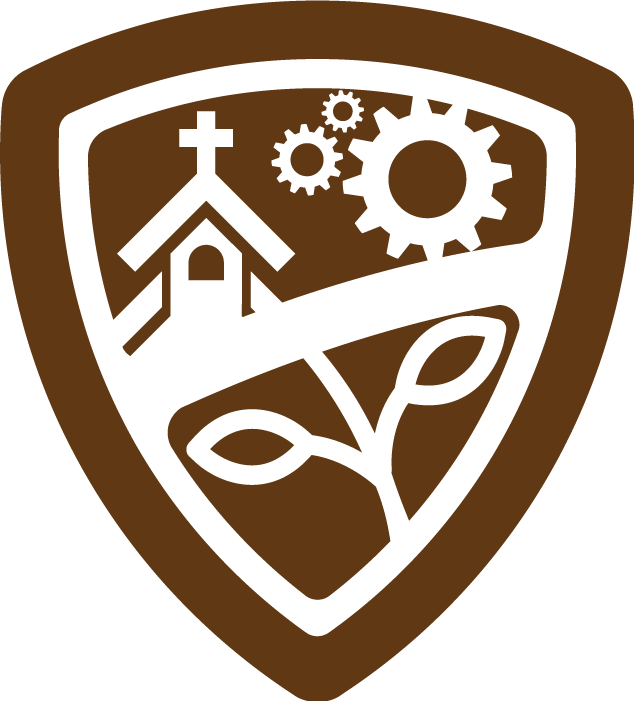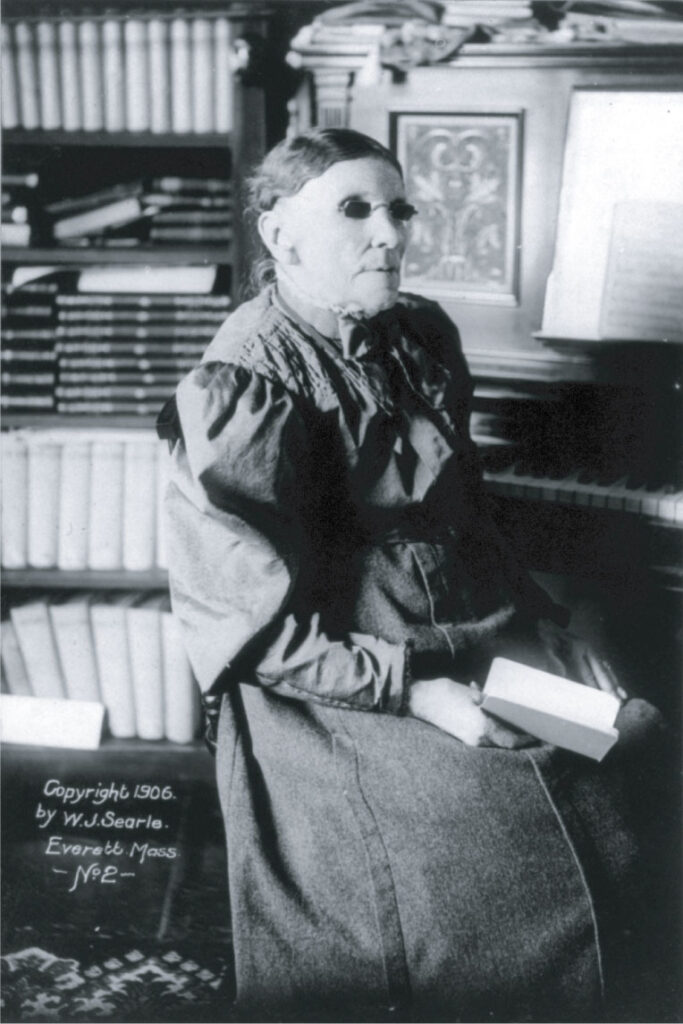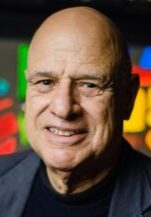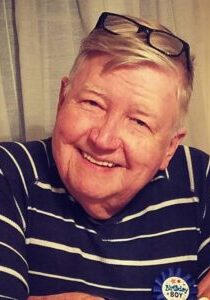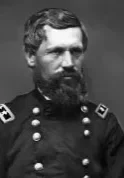Fanny Crosby
March 24, 1820 - February 12, 1915
Hymn Writer
Hymn Writer
From Brewster, New York
Served in Brooklyn, New York
Affiliation: Baptist
"All the way my Savior leads me, Cheers each winding path I tread; Gives me grace for every trial, Feeds me with the living Bread. Though my weary steps may falter, And my soul athirst may be, Gushing from the Rock before me, Lo! A spring of joy I see..."
The “Queen of Gospel Song Writers” came into this world on March 24, 1820. Fanny Crosby was the only child of John and his second wife, Mercy Crosby. She had a half-sister from her father’s first marriage. Hardship came to her early in life, and without her full recognition. At six weeks old, her eye sight was fully debilitated by an eye infection according to her own account. Medical ignorance in the treatment of the infection was the key factor that caused her permanent blindness. At six months old, her father passed away. Hence, her childhood in Putnam County, New York was much different and more challenging than most other children. Miss Crosby was raised by her mother and grandmother.
Mrs. Crosby ensured her home was filled with hope and faith. Based on Fanny Crosby’s recollections, her mother would tell her of the great poets, Milton and Homer, who despite their blindness, created enduring works of literature. The Bible was regularly read aloud for instruction and encouragement. At times, her mother was herself in need of encouragement due to her daughter’s condition. She would become anxious about her daughter’s future. Mrs. Crosby was well-supported by her mother-in-law, Eunice Crosby.
In addition to being read the Bible, young Fanny also memorized large portions of it. She memorized five chapters a week. She was able to recite the Pentateuch, the Gospels, Proverbs, and the Song of Solomon, among many other passages. She was also read the classics. Her ears and mind were filled with the works of Shakespeare, the escapades of Don Quixote, the wisdom of Pilgrim’s Progress, and the exploits of Robin Hood.
Despite being fatherless and blind, the environment created by her mother and grandmother produced uncanny calm and resoluteness in her young heart. In her first poem, at age eight, she wrote:
Oh, what a happy child I am, Although I cannot see!
I am resolved that in this world
Contented I will be.
How many blessings I enjoy
That other people don’t!
So weep or sigh because I’m blind, I cannot, nor I won’t!
At 15 years of age, Fanny Crosby began attending the New York Institution for the Blind in New York City. While at the school, a traveling phrenologist examined the shape and size of Miss Crosby’s skull. (In the field of phrenology, the study of these two components is supposed to yield insight into a person’s character and mental abilities.) The doctor deduced she possessed poetic gifts and encouraged the school to train her with great attention. Indeed, he was correct even though his field of science has since been deemed a pseudoscience. Her time of education at the school lasted 12 years. She was taught by voice exclusively and never learned the Braille system.
While a student, Fanny Crosby composed poetry for publication. When President William Henry Harrison died in 1841, she composed a eulogy which was published by the New York Herald. Other verses of hers were published by other print outlets. The budding poetess had her first volume of poems, The Blind Girl: And Other Poems, published in 1844. The follow-up volume, Monterey, And Other Poems, was published in 1851. She ventured into music in the same year writing lyrics for George F. Root, the school’s music instructor. She was the librettist for the cantatas “The Flower Queen” and “The Pilgrim Fathers.” They enjoyed great reception from the public though it is doubtful they knew the libretto was written by Miss Crosby. She also gave verbal shape to hit songs of the day such as “Hazel Dell,” “There’s Music in the Air,” and “Rosalie, the Prairie Flower.”
Upon graduating from the New York Institution for the Blind, Fanny Crosby took a teaching position at her alma mater. She taught English grammar, rhetoric, and Roman and American history from 1847-58. While teaching, she began to fancy a fellow teacher, Alexander Van Alstyne. A romance budded and they wed in 1858. Their only child died in infancy. Mr. Van Alstyne was a musician himself, an accomplished organist. Once Crosby began writing hymns in 1864, he also contributed music to them. Their marriage eventually began to deteriorate and finally in 1880 they separated. Van, as he was affectionately referred to, died in 1902.
The most important event in her life took place in 1849. Even though Fanny Crosby was religious and filled with much biblical knowledge and content, she had not been converted. Even though she had memorized texts about Christ’s life and salvific work on the cross, she had never been transformed. This changed due to a dream she dreamt about a friend who was near death. In the dream, he asked her about eternal salvation. Upon awakening, she was quite shaken by the incident. Thereafter, she attended many church services. In time, she believed in Christ at 31 years of age.
Fanny Crosby’s hymn-writing career began in 1864, the penultimate year of the Civil War. Before and during the Civil War, she wrote poems and songs that advocated the abolition of slavery. She was a stalwart Unionist as evidenced by her satirical “Song to Jeff Davis,” in which she claimed God was on the North’s side. “Our stars and stripes are waving, And Heav’n will speed our cause” is the last line of the song. She also exhibited some feistiness when degraded by a Southern woman. Miss Crosby was in a New York restaurant wearing a U.S. flag pin. The woman noticed the pin and said, “Take that dirty rag away from here.” Fanny retorted, “… repeat that remark at your own risk.”
Fanny Crosby wrote a staggering number of hymns. Estimates range from 5,500 to 9,000. The exact number is unknown due to her use of multiple pseudonyms, as many as 200 different names. She employed this strategy as a result of the great number of hymns she produced. About 4,000 of her songs were published by The Biglow & Main Co. for whom she worked. At times, she also composed the music for the songs. She played the guitar and piano and was a trained vocalist. Her musical writing ranged from complex to simple. Her preference were melodies and harmonies with a more straightforward chordal structure.
Ms. Crosby’s hymns gained wider popularity when Ira Sankey began singing them while supporting Dwight Moody’s evangelistic campaigns. “Blessed Assurance,” “All the Way My Savior Leads Me,” “Safe in the Arms of Jesus,” and “To God Be the Glory” were among those campaign attendees belted out with jubilance. “Safe in the Arms of Jesus” held a special place in Crosby’s heart.
On a certain day, musician William Doane unexpectedly paid Fanny Crosby a visit. He had recently written a melody and desperately needed words to pair with the composition. Upon hearing the melody, the sentiment of the Christ’s love was communicated Miss Crosby believed. She hurriedly wrote the lyrics. There was no time for review or revisions because Mr. Doane had a train to make. He took the paper with the lyrics and Christians have embraced the message of “Safe in the Arms of Jesus” since then.
Fanny Crosby yearned for people to believe in Jesus after hearing the truth in the lyrics she wrote. She recorded the name of every person who told her of their faith in Christ due to her songs.
Fanny Crosby was also a lobbyist on behalf of students with special needs. In 1843, she addressed the United States Senate about issue. She was the first woman to speak to the august body. Two years later, she spoke to a joint session of Congress. She raised the issue to many national and state leaders, including Presidents Martin Van Buren and John Tyler. Often, she would compose poems communicating the situations surrounding students with disabilties.
In the final third of her life, Crosby ministered to the most impoverished of New York City’s neighborhoods. She supported efforts to help alcoholics, the homeless, and unwed mothers. After her separation from Mr. Van Alstyne, she moved into a dilapidated flat on the Lower East Side near Manhattan’s worst slums. Referred to as “Aunt Fanny,” she continued this work until age 94.
Fanny Crosby permitted God not only to convert her soul, but also God converted her weakness into a great strength. She credited her infirmity with providing her an excellent education. She believed her influence and her impressive memory would have been noticeably less if not for her blindness. She told one person who expressed pity for her condition, “Do you know that if at birth I had been able to make one petition, it would have been that I was born blind? Because when I get to heaven, the first face that shall ever gladden my sight will be that of my Savior.”
The famed hymnwriter churned out one final volume of poetry in 1897 and wrote two volumes of autobiography. After a six-month illness, Fanny Crosby died of arteriosclerosis and a cerebral hemorrhage on February 12, 1915. In her will, she set aside funds to be used in the development of a mission in Bridgeport, Connecticut where she had lived out her last years of life. The mission served the poor from 1925 to 1966.
***
Fanny Crosby points us to the power of Jesus Christ despite a significant physical weakness. “My grace is sufficient for you, for my power is made perfect in weakness,” Christ told Paul the Apostle. Paul then declares to the Corinthian church, “I delight in weaknesses … For when I am weak, then I am strong.” Fanny’s delight in her weaknesses demonstrated the power of Christ’s grace available to all.
Fanny J. Crosby lived to be 94 years of age.
SOURCES: Britannica, Hymnology Archive, Fanny J. Crosby: An Autobiography, AuthenticWorship.org, Her Heart Can See: The Life & Hymns of Fanny J. Crosby,Christianity.com
